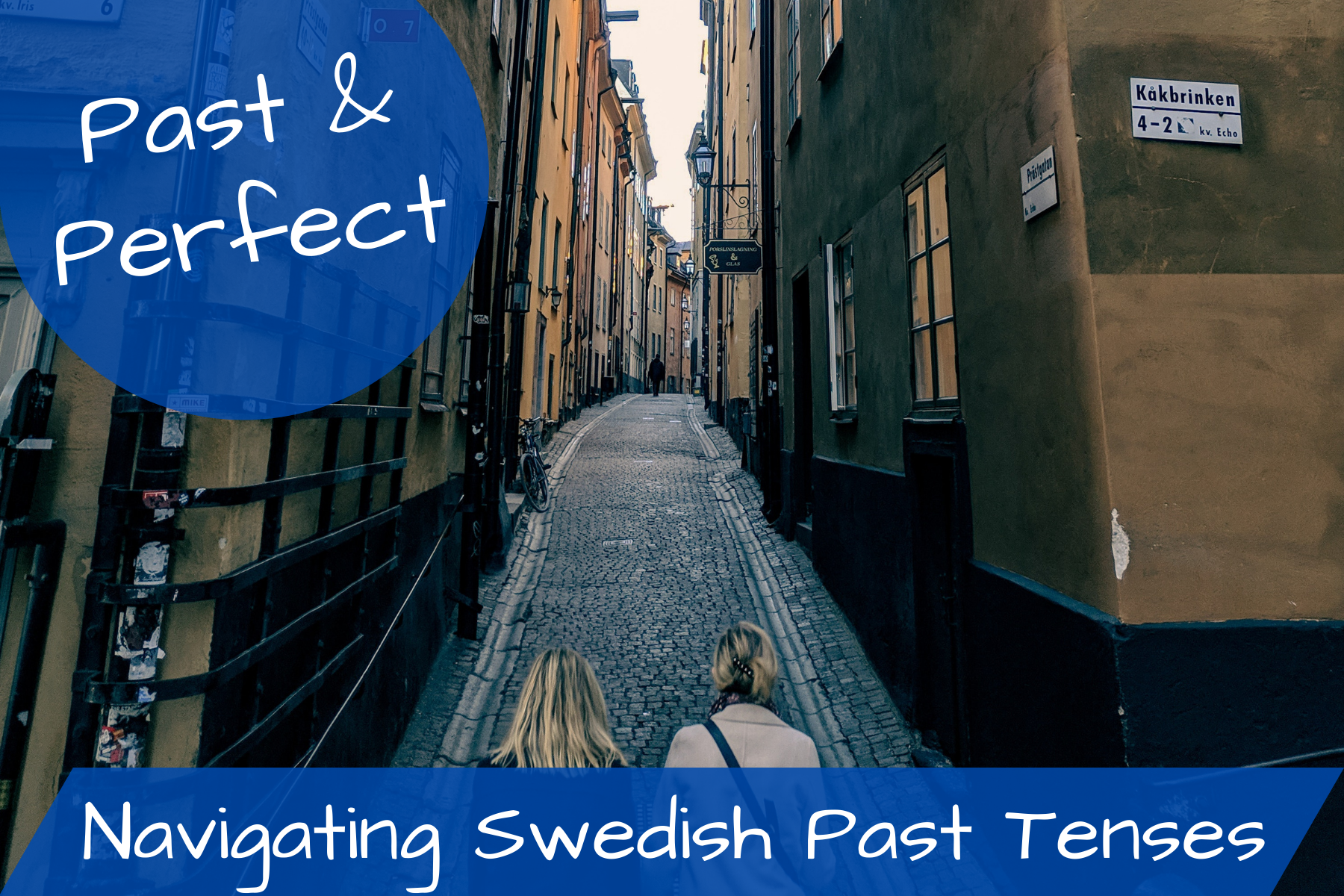Navigating Between Swedish Past and Perfect Tense Posted by Chelsea B on Jul 16, 2021 in Culture, Grammar, Swedish Language, Vocabulary
Memorizing and conjugating Swedish verbs needs to be more than just busywork. Learning how to use one tense over another is more important. To illustrate this point, we’re going to navigate the difference between the preteritum (past) and perfekt (perfect) tenses, and then how to use them together. So grab your favorite verb chart and let’s go!
Tenses Vary from Swedish to English
As a Swedish language student, you know by now that literal translations from Swedish won’t get you very far. Oftentimes, Swedes use a different tense altogether than what seems appropriate in comparison to your mother tongue. One of the best instances of this is “I was born in…” Was is used here to describe a birth as a complete action. “I was born in Sweden.” However, a Swede considers this a present tense sentence “Jag är född i Sverige.” When speaking English, Swedes often directly translate this using present tense and make the mistake of saying, “I am born in Sweden.” (*OBS svenskar!)
Another demonstration of this idea highlights our two verb tenses of the day: preteritum (past) and perfekt (perfect). On average, Swedish speakers tend to use the perfect tense much more than English speakers. When an English speaker would ask, “What happened?” a Swede is more likely to use the perfect tense to say “Vad har hänt?” (what has happened).
As you’ve noticed, we’re moving past the present tense, so if you aren’t totally comfortable with Swedish the basic verb groups and their conjugations, review these resources before moving further:
Swedish Verb Roulette Featuring “201 Swedish Verbs”
Preteritum – the Swedish Past Tense
Fun with Swedish Grammar– Perfect Perfekt
Swedish Past and Perfect Tenses – Let’s Review
Both the past and the perfect tenses describe past actions. But they differ slightly. Simply put, the past is used to describe a time frame or action that is totally complete. Think yesterday:
Helena skrattade åt mig igår. Helena laughed at me yesterday.
*Yesterday is the complete time frame so the past tense is best here for this context.
Vi spelade tennis när vi var små. We played tennis when we were little.
*Here, we played tennis but don’t do it anymore.
Now, enter the (simple) perfect tense. This is used in a few different ways, but mainly when we are referring to a nondescript time frame or an action that is ongoing, incomplete. We use the helping verb har (have) and the supine form of the verb. For example:
Helena har inte skrattat än idag. Helena has not laughed yet today.
*Today, is still happening, the time frame is incomplete.
Helena har bott i Lund i 8 år. Helena has lived in Lund for 8 years.
*We use perfect here because Helena continues to live in Lund.
Perfect Tense: What have you done?
Remember the game “Have you ever…?” Perfect is the tense you need to succeed here.
Har du varit i USA? Have you been to the U.S.?
Har du någonsin ätit surströmming? Have you ever eaten sour herring?
Har du tänkt att flytta tillbaka till Umeå? Have you thought of moving back to Umeå?
Using Swedish Past and Perfect Tenses in Harmony
This can be harder than you think. Perhaps you are accustomed to your instructor telling you to pick a tense and stick with it. This is true when writing a film synopsis, or retelling your weekend plans, but don’t let tenses limit you. The best way to jump between tenses is to start with this sequence*:
PERFEKT PRETERITUM
Vad har du gjort i ditt liv? När gjorde du det?
What have you done in your life? When did you do it….?
Jag har bott i ett annat land. Jag bodde i Kanada från 2005 till 2010.
I have lived in another country. I lived in Canada from 2005 to 2010.
Jag har lärt mig svenska. Jag lärde mig svenska i skolan.
I have learned Swedish. I learned Swedish in school.
You can also answer the preteritum column using the Swedish kortsvar (short answer form). See below:
Jag har firat Midsommar i Finland. Det gjorde jag i 2018.
I have celebrated Midsommar in Finland. I did it in 2018.
Cycle back and forth between describing something you have done using perfect and the complete details of what you did using past tense. Don’t forget to practice asking questions using both forms:
Har du sjungit karaoke? Var sjöng du karaoke?
Have you sung karaoke? Where did you sing karaoke?
Work through all the verb groups as you practice flexing between these forms. Questions? Drop them in the comments below!
*The past and perfect sequence exercise is adapted from Form i fokus: övningsbok i svensk grammatik – del B. 1997. Fasth and Kannermark, page 56.

Build vocabulary, practice pronunciation, and more with Transparent Language Online. Available anytime, anywhere, on any device.




